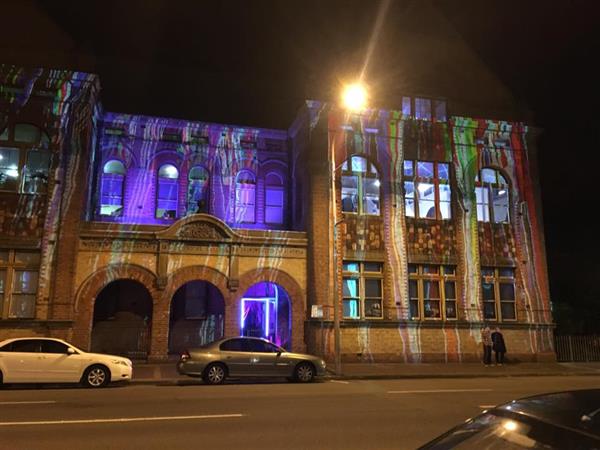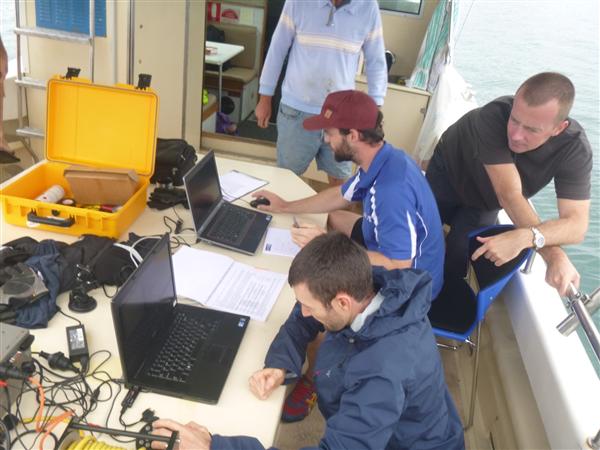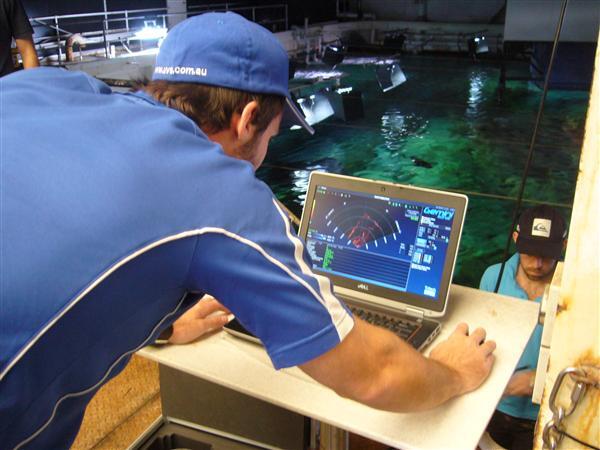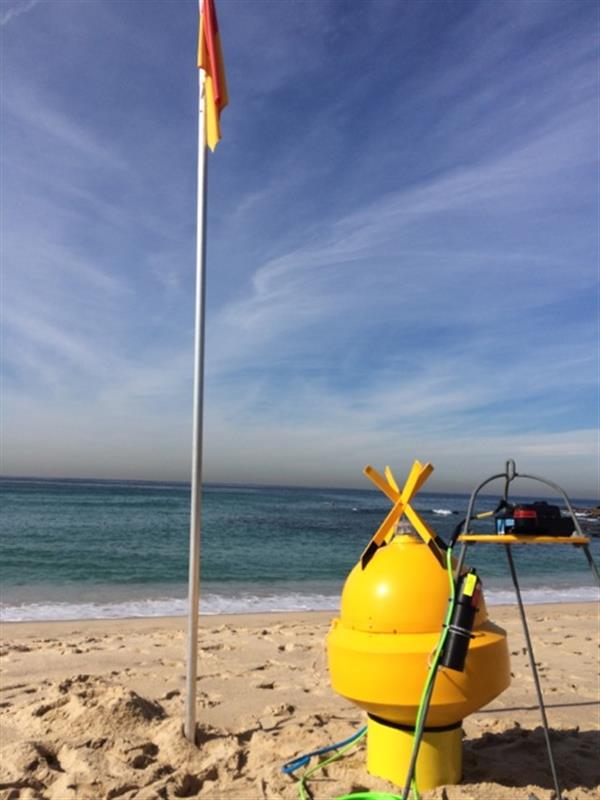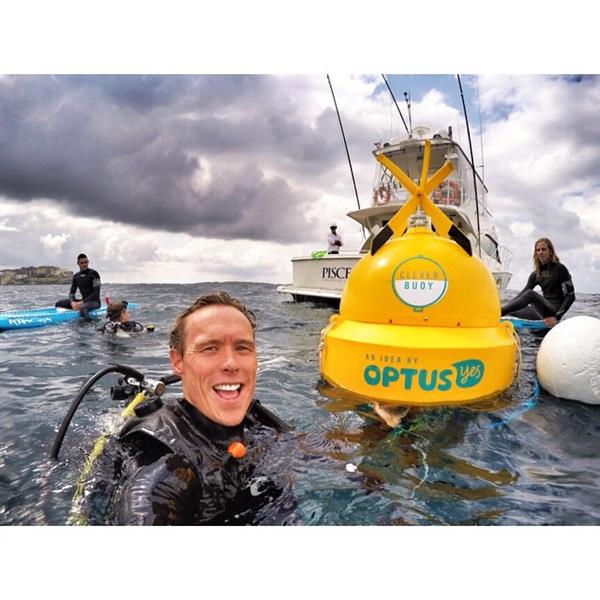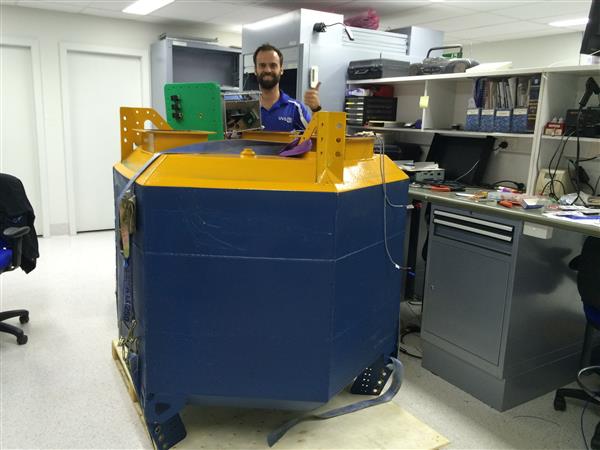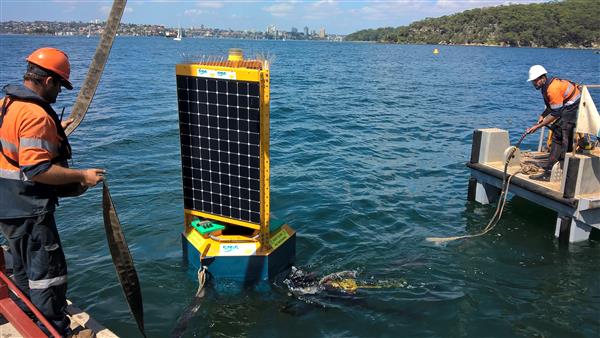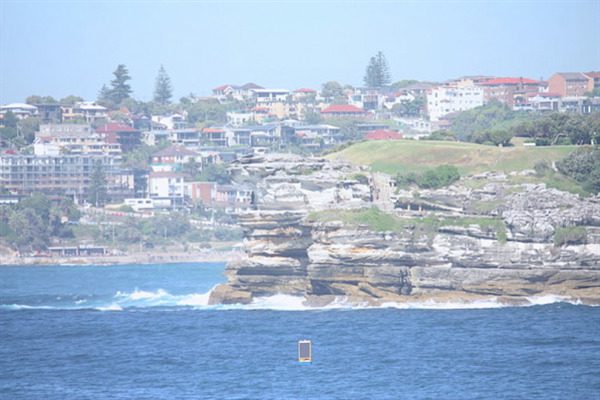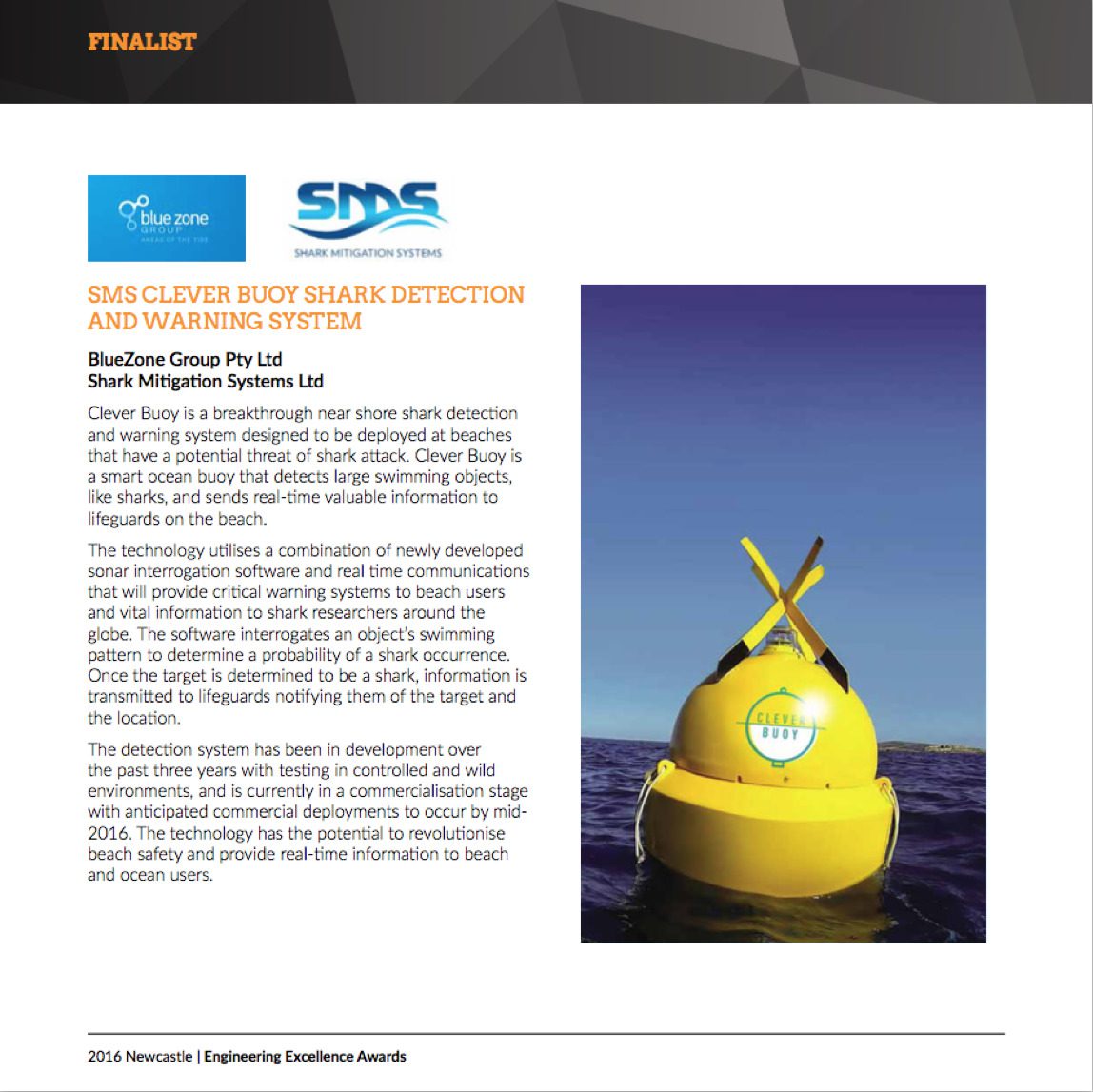We service what we sell
Clever Buoy – Shark Detection System
BlueZone supported Shark Mitigation Service in development of the Optus “Clever Buoy”, an innovative device for detection of sharks at beaches.
The Clever Buoy development was required to meet a tight timeframe to develop a proof-of-concept device from the whiteboard to at-sea testing in just twelve weeks. Rapidly assembling a skilled engineering team, BlueZone utilised resources from both the Perth and Newcastle offices to form a virtual team to complete the project on time. The project team worked closely with Shark Mitigation Services and Optus to develop a broad concept into a detailed design. In parallel with the deign effort parts were procured to speed the time to market and the complete system was assembled and tested in time for a major media launch at Bondi Beach.
The Clever Buoy integrates a sonar detection system, interface software, battery power and communications systems in one rugged buoy that can be deployed at beaches around the coastline. The integration of acoustics, electronics and software for marine applications is a specialty of the BlueZone engineering capability. BlueZone draws upon the resources of more the fifty OEM suppliers providing a wide range of leading edge equipment to draw from for ocean engineering projects. This is combined with many years of experience from diverse markets to resulting in innovative solutions to customer needs.
Clever Buoy Stage 2 Development
Clever Buoy is the first breakthrough innovation in shark detection technology in over 60 years.
Australia is well known as a country with a strong history of invention driven by the need to respond to demanding local conditions and Clever Buoy is an example of this. Inventiveness in Australia has often not been followed by success in commercialisation. New products often fail to be brought to market to result in the growth of new business.
For stage 2 SMS engaged with BlueZone and other companies in a new way to again deliver the project on time to meeting demanding timelines, resulting in the opportunity for SMS to leverage publicity to support their Initial Public Offer and subsequent ASX listing. The high value of rapid development of engineering projects cannot be underestimated in the dawning age of smart manufacturing.
The Clever Buoy design includes embedded software from both BlueZone and Tritech (sonar supplier) combined with satellite data services and smartphone applications developed to display data to the public.
The complete project can be considered an example of “smart city” implementation in that technology is being used in a new way to monitor public beaches to reduce the risk for swimmers. This response is a twenty-first century response to shark/human interaction and well ahead of the nineteenth century thinking of shark meshing and the eighteenth century thinking of shark culling.
Clever Buoy Receives NEWi Award for Best Government Solution
BlueZone Group has been successful in the The Lunaticks Society 2016 NEWi Awards for Digital Creativity, receiving the NEWi Award for Best Government Solution – an award that recognises the most exciting and innovative government or NGO use of technologies or online services.
The Clever Buoy breakthrough near shore shark detection and warning system was selected for the award.
The Clever Buoy was entirely initiated and managed by Shark Mitigation Systems Ltd with BlueZone Group providing best practice engineering capability for two stages of development.
The first stage was taken from “whiteboard sketch” to successful practical demonstration at Bondi Beach in just twelve weeks. For the second stage SMS assembled a global collaborative engineering team including: systems engineers BlueZone Group (Newcastle, NSW); mechanical engineers Ribuck Industries (Perth, WA); sonar designers Tritech (Aberdeenshire, Scotland) and communication system providers, Optus, who provided satellite communication services, delivery of data from the Clever Buoy to the internet and development of a smartphone application.
BlueZone Group, CTO, Darren Burrowes, accepted the award on behalf of BlueZone and the collaborative team who delivered the project. Darren said that the Clever Buoy could be considered an example of “smart city” implementation in that technology is being used in a new way to monitor public beaches to reduce the risk for swimmers. “This response is a twenty-first century response to shark/human interaction and well ahead of the nineteenth century thinking of shark meshing and the eighteenth century concept of shark culling,” said Darren.
